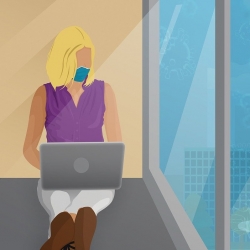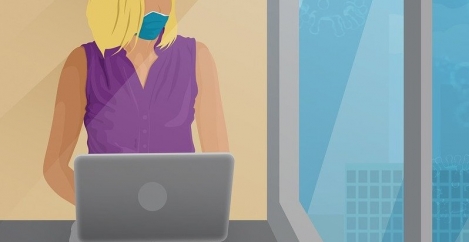May 12, 2020
Government publishes guidance on how people should safely return to work
 The UK Government has issued new guidance to help people return to work safely. Measures include redesigns of all workplaces including offices to maintain social distancing, staggered times of work, the use of as many entrances to a building as possible and changed layouts. The guidelines cover eight workplace settings including construction, offices and contact centres, factories, plants and warehouses and shops.
The UK Government has issued new guidance to help people return to work safely. Measures include redesigns of all workplaces including offices to maintain social distancing, staggered times of work, the use of as many entrances to a building as possible and changed layouts. The guidelines cover eight workplace settings including construction, offices and contact centres, factories, plants and warehouses and shops.
The government claims it has consulted approximately 250 stakeholders in preparing the guidance. It has been developed with input from firms, unions, industry bodies and the devolved administrations in Northern Ireland, Scotland and Wales and in consultation with Public Health England (PHE) and the Health and Safety Executive (HSE), to develop best practice on the safest ways of working across the economy, providing people with the confidence they need to return to work.
The new guidance covers 8 workplace settings which are allowed to be open, from outdoor environments and construction sites to factories and takeaways. It is based on five key points which the guidance says should be implemented when it is practical to do so.
- Work from home, if you can
All reasonable steps should be taken by employers to help people work from home. But for those who cannot work from home and whose workplace has not been told to close, our message is clear: you should go to work. Staff should speak to their employer about when their workplace will open.
- Carry out a COVID-19 risk assessment, in consultation with workers or trade unions
This guidance operates within current health and safety employment and equalities legislation and employers will need to carry out COVID-19 risk assessments in consultation with their workers or trade unions, to establish what guidelines to put in place. If possible, employers should publish the results of their risk assessments on their website and we expect all businesses with over 50 employees to do so.
- Maintain 2 metres social distancing, wherever possible
Employers should re-design workspaces to maintain 2 metre distances between people by staggering start times, creating one way walk-throughs, opening more entrances and exits, or changing seating layouts in break rooms.
- Where people cannot be 2 metres apart, manage transmission risk
Employers should look into putting barriers in shared spaces, creating workplace shift patterns or fixed teams minimising the number of people in contact with one another, or ensuring colleagues are facing away from each other.
- Reinforcing cleaning processes
Workplaces should be cleaned more frequently, paying close attention to high-contact objects like door handles and keyboards. Employers should provide handwashing facilities or hand sanitisers at entry and exit points.
A downloadable notice is included in the documents, which employers should display in their workplaces to show their employees, customers and other visitors to their workplace, that they have followed this guidance.
Sarah Albon the Chief Executive of the Health and Safety Executive said that “the BEIS guidance issued today sets out practical steps employers can take to enable staff to continue and return to work. We have worked with BEIS to ensure businesses have access to the information they need to put in place measures to help them work safely. This will assist employers in carrying out risk assessments and putting practical measures in place. At the heart of the return to work is controlling the risk posed by the virus. Ensuring safe working practices are in place will help deliver a safe return to work and support businesses across the country.”
As part of the announcement, the government has made available up to an extra £14 million for the HSE, equivalent to an increase of 10 percent of their budget, for extra call centre employees, inspectors and equipment if needed.














